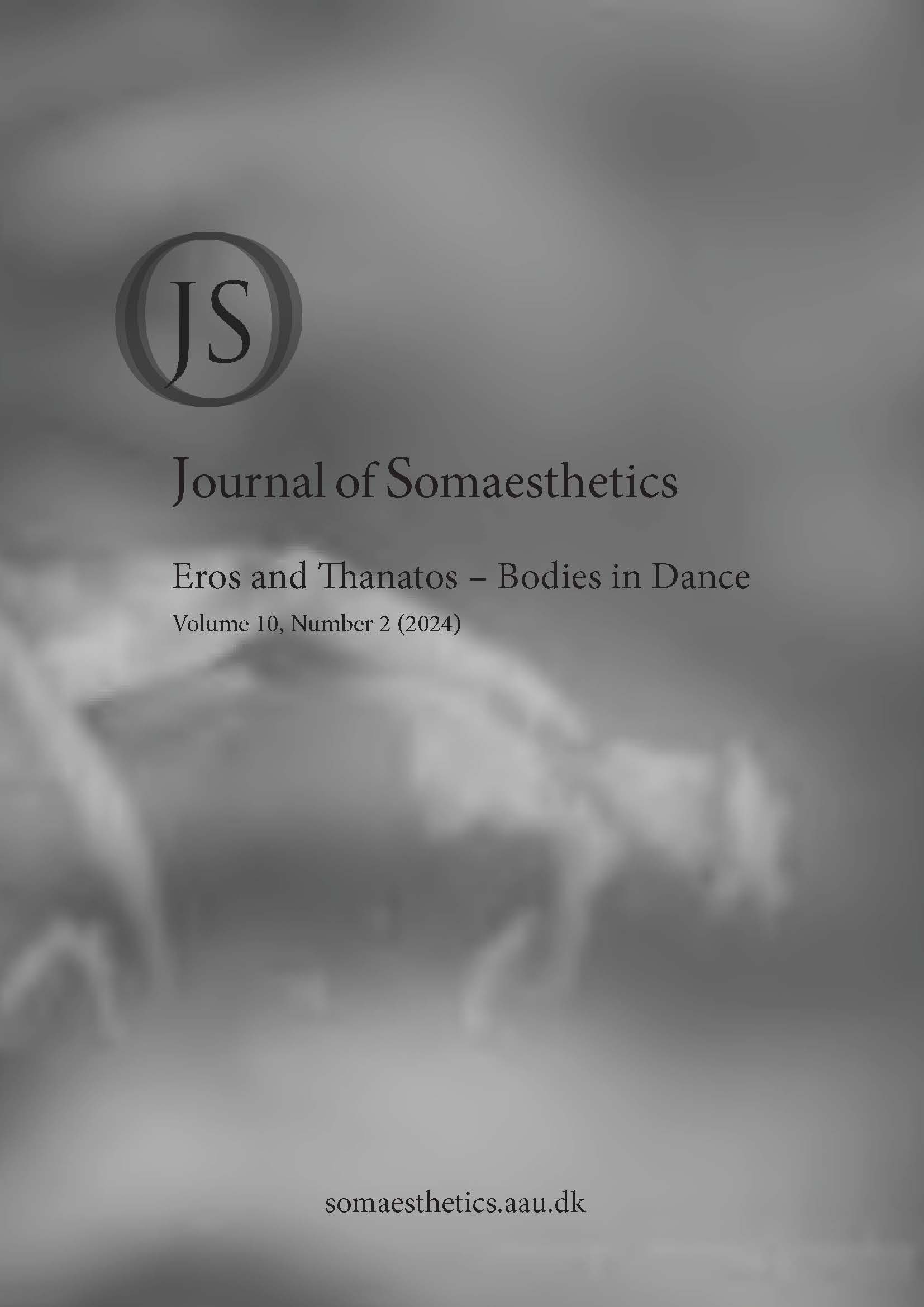Nietzsche and Freud: Pandora's box of transgressive contemporary art
DOI:
https://doi.org/10.54337/ojs.jos.v10i2.8680Abstract
Kieran Cashell defines the art of transgression as influenced by the "dark troika" (Nietzsche, Freud, and Bataille). This paper examines Nietzschean and Freudian contributions to an art detached from traditional aesthetics like form, symmetry, and beauty, referred as "de immundo" by Jean Clair. It explores Nietzsche's early work, "The Birth of Tragedy," and its concepts of the Apollonian and Dionysian, linking them to Freudian psychoanalysis. The paper concludes by discussing Nietzsche's influence on psychoanalysis and contemporary transgressive art.
References
Adler, A. (1917). The neurotic constitution. New York, NY: Moffat, Yard and Company.
Ambrosini, C. (n.d.). El juego: paidía y ludus en Nietzsche. Retrieved from http://www.pucp.edu.pe/eventos/congresos/.../AmbrosiniCristina.pdf
Assoun, P. L. (1982). Freud, la filosofía y los filósofos. Barcelona, Spain: Paidós.
Bataille, G. (1986). Erotism: Death and sensuality (M. Dalwood, Trans.). Monroe, OR: City Lights Books.
Boethius. (1918). The consolation of philosophy (H. F. Stewart, Trans.). Harvard University Press.
Cashell, K. (2009). Aftershock: The ethics of contemporary transgressive art. New York, NY: Bloomsbury Publishing.
Chapman, A. H., & Chapman-Santana, M. (1995). The influence of Nietzsche on Freud's ideas. The British Journal of Psychiatry, 166(2), 251-253. https://doi.org/10.1192/bjp.166.2.251
Clair, J. (2004). De immundo. Paris: Gallimard.
Cybulska, E. (2015). Freud's burden of debt to Nietzsche and Schopenhauer. Indo-Pacific Journal of Phenomenology, 15(2), 1–15. https://doi.org/10.1080/20797222.2015.1101836
Descartes, R. (1996). Meditations on first philosophy (J. Cottingham, Trans.). Cambridge University Press.
Ehrenzweig, A. (2007). The psycho-analysis of artistic vision and hearing. Oxford, UK: Taylor & Francis Group. (Original work published 1953)
Einstein, A., & Freud, S. (1933). Why war? International Institute of Intellectual Cooperation. https://archive.org/details/freud-einstein-1933-war/page/n7/mode/2up
Eliade, M. (2005). The myth of the eternal return. New Jersey: Princeton University Press. (Original work published 1949)
Fink, E. (2003). Nietzsche’s philosophy. New York: Continuum.
Foster, H. (1993). Compulsive beauty. London, England: MIT Press.
Foster, H., Krauss, R., Bois, Y., & Buchloh, B. (2007). Art since 1900. London, England: Thames and Hudson.
Freeland, C. (2001). But is it art? An introduction to art theory. New York: Oxford University Press.
Freud, S. (1905). Three essays on the theory of sexuality. In The standard edition of the complete psychological works of Sigmund Freud (Vol. VII) (pp. 123-246).
Freud, S. (1915). Instincts and their vicissitudes. Retrieved from https://dravni.co.il/wp-content/uploads/2014/05/Freud-S.-1915.-Instincts-and-their-Vicissitudes.pdf
Freud, S. (1917). Contributions to the history of the psychoanalytic movement. New York: The Nervous and Mental Disease Publishing Company.
Freud, S. (1930). Civilization and its discontents. In The standard edition of the complete psychological works of Sigmund Freud (Vol. XXI) (pp. 57-146).
Freud, S. (1985a). Letter of February 1, 1900. In The complete letters to Wilhelm Fliess, 1887–1904. London, UK: Belknap Press of Harvard University Press.
Freud, S. (1985b). Letter of January 1, 1896. In The complete letters to Wilhelm Fliess, 1887–1904. London, UK: Belknap Press of Harvard University Press.
Freud, S. (1989). The ego and the id (1923). TACD Journal, 17(1), 5-22. https://doi.org/10.1080/1046171X.1989.12034344
Freud, S. (1992). The ego and the mechanisms of defence. London, England: Karnac Books. (Original work published 1936).
Freud, S. (2024). Beyond the pleasure principle. In Towards the limits of Freudian thinking. Louvain, Belgium: Leuven University Press. (Original work published 1920)
Heidegger, M. (1991). Nietzsche. New York, NY: HarperCollins Publishers.
Henrich, D. (1985). The contemporary relevance of Hegel’s aesthetics. In M. Inwood (Ed.), Hegel. Oxford, England: Oxford University Press.
Jiménez, J. (2012). Les maîtres du désordre [Article]. Retrieved December 13 from http://josejimenezcuerpoytiempo.blogspot.com
Jones, E. (1953-1957). Sigmund Freud: Life and work (Vols. 1-3). Hogarth Press.
Karwautz, A., Wober-Bingol, C., & Wober, C. (1995). Friedrich Nietzsche and Sigmund Freud. The British Journal of Psychiatry, 166(6), 825–826. https://doi.org/10.1192/bjp.166.6.825
Krauss, R.(1994). The optical unconscious. London England: MIT Press.
Kristeva, J. (1982). Powers of horror: An essay on abjection. New York NY: Columbia University Press.
Kuspit, D. (2004). The end of art. Cambridge England: Cambridge University Press.
Laban, R. (1971). The mastery of movement. Macdonald & Evans.
Lenain, T. (1993). Pour une critique de la raison ludique: Essai sur la problématique nietzschéenne. Paris France: J.Vrin.
Lévi-Strauss,C.(1963a). The sorcerer and his magic. In Structural Anthropology (pp129-137) New York Basic Books.
Lévi-Strauss,C.(1963b). The effectiveness of symbols. In Structural Anthropology (pp186-205) New York Basic Books.
Lichtenberg,G.C.(2000). Aphorisms (R.J.Hollingdale Trans.) Penguin Books.(Original work published1765-1799).
Marcuse, H.(2013). One-dimensional man: Studies in the ideology of advanced industrial society. Pacifica USA : Marxists Internet Archive.(Original work published1964).
Michaud, Y. (2009). L'art à l'état gazeux: Essai sur le triomphe de l'esthétique. France : Hachette Littératures.
Nitsch, H.(1995). The theatre of orgies and mysteries: A manifesto. Vienna: Nitsch Foundation.
Nietzsche, F. (1910). The birth of tragedy. Edinburgh: T.N.Foulis.
Nietzsche, F. (1966). Über Wahrheit und Lüge im außermoralischen Sinn [On truth and lies in a nonmoral sense]. In Schlechta (Ed.), Werke in drei Bänden(Vol III pp309-322)(P.Oyarzún Trans.) München: Hanser.Retrieved from http://www.cfg.chile.cl
Nietzsche, F. (1996). The birth of tragedy (D.Smith Trans.) Oxford University Press.
Stelarc. (1984). Strategies and trajectories. In J.D.Paffrath & Stelarc(Eds.), Obsolete body/suspensions/Stelarc .Davis CA : Calif.Publications.
Trías,E. (2008). The aesthetics of the sublime: Kant Schopenhauer Nietzsche Freud Libet (G. D. Golsan & R. E. Golsan Trans.) Harvard University Press. (Original work published1988).
Vattimo, G. (1986). The crisis of subjectivity from Nietzsche to Heidegger. Differentia: Review of Italian Thought ,1(5).
Vattimo, G. (2002). Nietzsche: An introduction. London UK : The Athlone Press.
Žižek, S. (2008). Violence: Six sideways reflections. New York NY : St Martin’s Press.
Downloads
Published
Issue
Section
License
Copyright (c) 2024 Pedro Salinas, Belen del Cid Silva

This work is licensed under a Creative Commons Attribution-NonCommercial-NoDerivatives 4.0 International License.
Articles published in The Journal of Somaesthetics are following the license Creative Commons Attribution-NonCommercial-NoDerivs 4.0 Unported (CC BY-NC-ND 4.0). Authors retain copyright and grant the journal right of first publication with the work simultaneously licensed under a Creative Commons Attribution License: Attribution - NonCommercial - NoDerivs (by-nc-nd). Further information about Creative Commons
If excerpts, tables, figures, charts, artwork or photographs from other copyrighted works are included in an article, it is the author’s responsibility to obtain written permission from the copyright owners and credit the source’s in the article and citation list.


